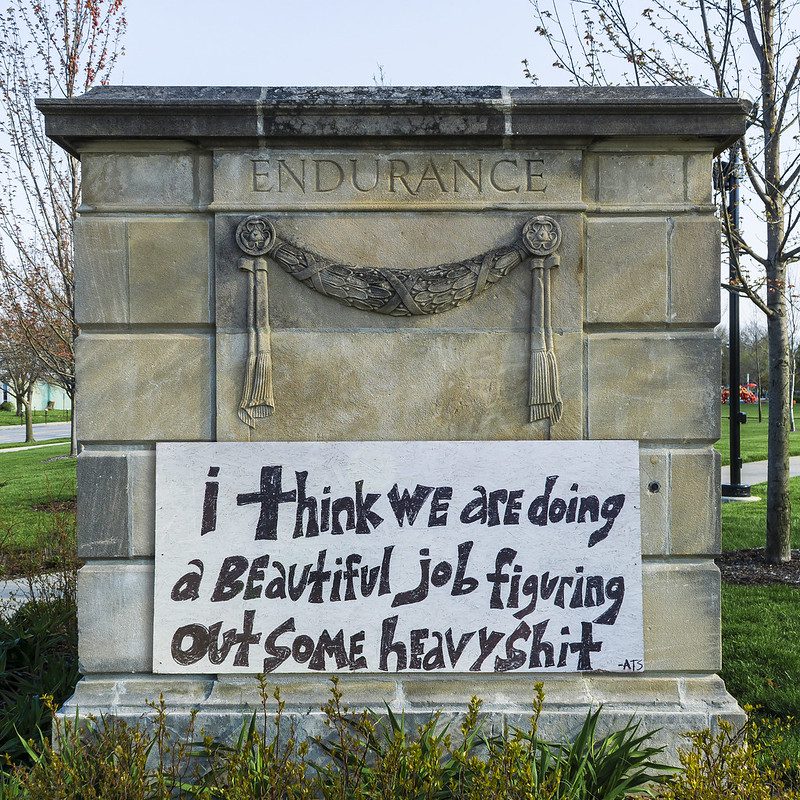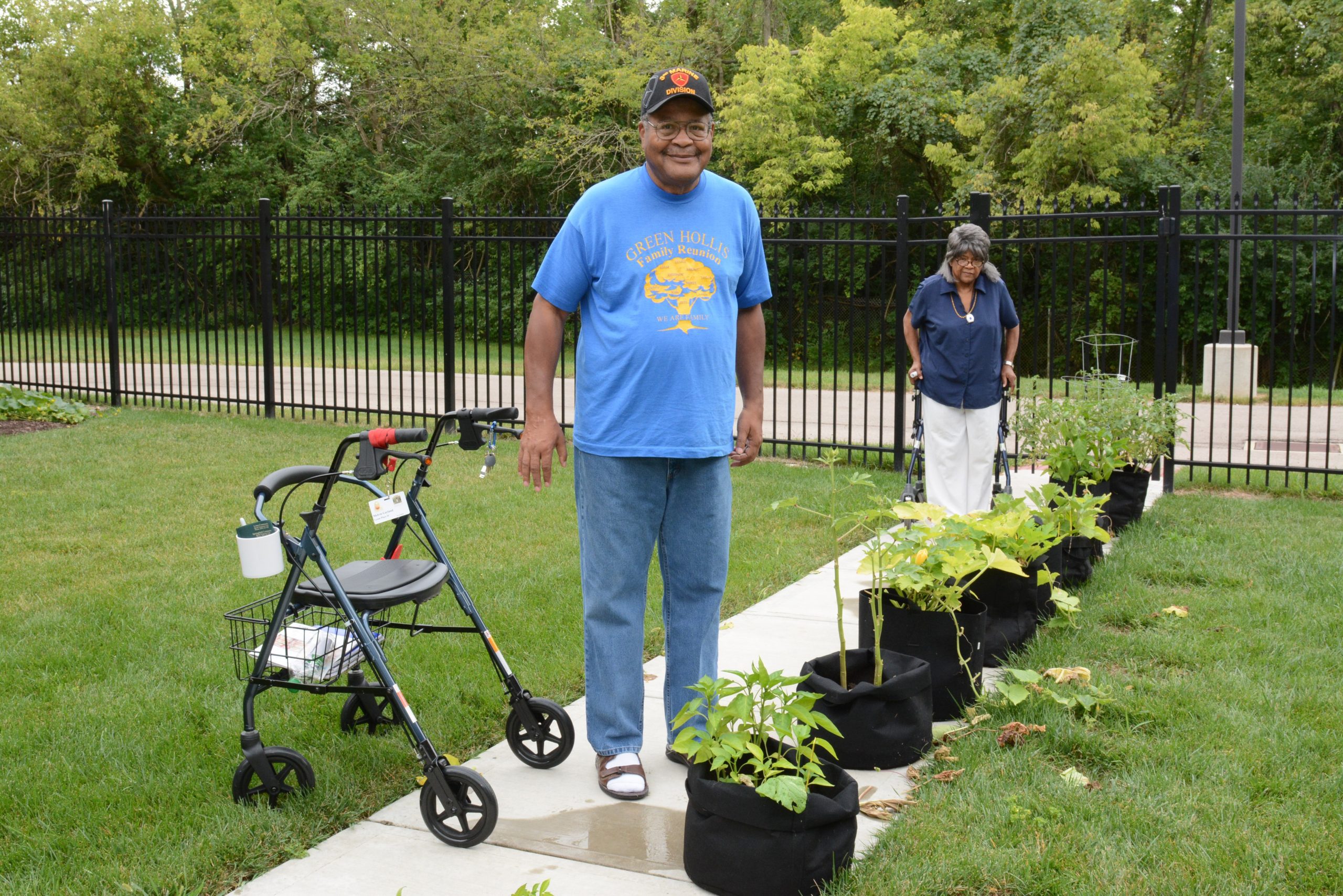
Photo by Flickr user Gust, CC BY-NC-ND 2.0
Mike Connolly sounds wiped, kind of like how you or I might sound if we had run the Boston Marathon the day before. And yet, there’s a hopeful cadence in the Massachusetts state senator’s voice as we connect by phone from our respective homes on a sun-soaked Tuesday afternoon: a day that most of us would be spending outside if a novel virus weren’t spreading through American communities. Connolly has been busy answering calls and emails from stressed constituents. But he’s somehow found a few minutes to talk about Massachusetts’ just-passed eviction moratorium order—a landmark piece of tenant-protections legislation that he co-authored with state Sen. Kevin Honan to ensure that residents can shelter in place during the pandemic, without fear of reprisals by their landlords.
“This just made intuitive sense to me,” Connolly says. “As we’re all facing COVID-19, we’re realizing that for now, our only effective weapon is maintaining physical distancing to try to limit the transmission of the virus. And so, housing stability will be essential. If everyone doesn’t have housing, then we’re all more vulnerable.”
Since the pandemic began, many states have passed versions of an eviction stoppage. But the Massachusetts edition goes further than most. The state’s moratorium puts the kibosh on court proceedings that involve any eviction matters. It protects renters from late fees, Notices To Quit, negative credit reporting, and physical eviction by law enforcement. It also includes foreclosure protections, mortgage payment relief for qualifying landlords, and a freeze on evictions for small businesses and nonprofits. This sort of thing does not happen in Massachusetts often, to put it mildly. The state renowned for its astronomical real estate prices and a legislature that advances policy at a glacial pace, to the detriment of people who need help sooner.
But overnight, things changed. Princeton University’s Eviction Lab now ranks the Massachusetts COVID-19 housing measures as one of the strongest in the nation. Much of this is thanks to the strength and reach of housing equity organizations such as City Life/Viva Urbana. In mid-March, as the economic implications of the coronavirus pandemic became clear, Massachusetts housing activists organized a socially distanced rally outside Boston’s Edward Burke Housing Court, imploring legislators to halt evictions. This inspired Connolly to write the first draft of what would become the eviction moratorium that was signed by Gov. Charlie Baker roughly one month later in late April, just a couple of days before Connolly and I spoke.
“A point that I really tried to make, during the legislative process is that we’re not talking about some sort of charity or benefit,” Connolly says. “People need to stay home right now. There’s no meaningful way to conduct an apartment search. We can’t have landlords opening the door to show prospective tenants someone else’s apartment.”
It’s worth noting here that Massachusetts, typically considered a liberal state, has a Republican governor who’s been frosty to the notion that the government should play a role in the housing sector—especially when it comes to helping lower-income tenants find housing. The list of states that have passed pandemic-era eviction freezes is similarly diverse, when it comes to politics. Arizona, California, Illinois, Kansas, Michigan, and Oregon are just a few of the states that have stepped up for tenants in a more assertive way than we’re used to seeing in America. After decades of capitulation to the idea that housing should be left to the whims of the market, state governments are finally muscling their way into the issue, for the sake of public health.
This becomes even more eye-popping when you look beyond renters and consider what state governments have also been able to do for people who are experiencing homelessness. Mainly, they’re helping more people find safe places to live. Before COVID-19 arrived in America, housing for the homeless was in short supply. For every success story of an individual or family securing public housing, there are many more tales of overcrowded wait lists and shelters. Our approach to mitigating homelessness lacked urgency—or at least, an acknowledgment that lives were on the line. But a pandemic has a way of ramming that point home. And now, state governments are using their power to move people into housing where they can self-isolate.
California Gov. Gavin Newsom has been in the spotlight for launching Project Roomkey, a major initiative to get thousands of homeless residents into hotel rooms. Utilizing hotels for housing people who are homeless isn’t really groundbreaking policy (states have been doing this for years) but the scale of Project Roomkey is quite remarkable. California managed to procure FEMA funding for the project, which allowed the state government to set an initial goal of getting 15,000 state residents into hotel rooms. FEMA will cover 75 percent of the cost, including additional expenses like meals, laundry services, and security. And these “wraparound” expenses are another standout feature of Project Roomkey. Rather than just corral the homeless into bare-bones hotel rooms, the state is working with hospitality partners (like Chef Jose Andres’s World Central Kitchen) to provide essentials to people who qualify for temporary housing under Project Roomkey. The state, and the feds, are paying for all of these services. That is almost unheard of in America.
Of course, there’s the crucial question of how readily California can pull this off. As of April 24, the state had secured around 1,400 of the promised 15,000 hotel rooms. It’s possible that more hotel rooms could be added faster as the successes of the program become clearer. But one state that’s gone even further, in pursuit of the equivalent goal, is Connecticut. Like California, Connecticut’s regional homelessness institutions have been busy locking down hundreds of hotel rooms for homeless residents in an effort to reduce shelter density. But right around the time when this initiative was announced, in late March, Gov. Ned Lamont took the additional step of signing an executive order that forbade nonessential lodging. Per the order, hotels, motels, inns, and even Airbnbs can only rent rooms to those who need housing during the pandemic. That list includes health care workers, and . . . people experiencing homelessness.
Some will call it state overreach, but Lamont’s nonessential lodging order is an especially bold example of how government can be a more altruistic force in the housing landscape. Giving the most housing-insecure populations front-of-the-line access to hotels during a pandemic, with the government picking up the tab, is basically putting limits on housing commodification. This is the government meeting the moment, addressing the paradox that in America, there are thousands of unoccupied hotel rooms and apartments in states where homelessness has exploded lately.
But what if the government didn’t stop doing this when the pandemic is over? What if these bold new housing measures were designed to last beyond the “moment” of the coronavirus crisis? A state-subsidized hotel room isn’t a permanent home, but that’s not the only type of venue that states and cities are eyeballing for people who need housing now. Take a look at a COVID-19 financial stimulus package in Newark, New Jersey. That stimulus included $1 million for “Live Newark,” a program that gives lower-income Newark residents a pathway to homeownership, via forgivable loans that can be put toward downpayments and external repairs. The $1 million infusion will allow Live Newark to offer these resources to more first-time buyers, even as they weather the pandemic.
“Owning a home is the cornerstone of the American Dream,” Allison Ladd, deputy mayor and director of the Newark Department of Economic and Housing Development, told Insider NJ in April. “Homeownership creates strong, stable communities with increased volunteerism, improved health and less crime. That’s why it is so important to make Live Newark available to more residents.”
City-assisted homeownership is one way of ensuring that people who are experiencing housing insecurity aren’t just booted back to square one when the pandemic is over. But ownership isn’t a universal cure-all. It’s also worth asking, in a very literal sense, “How can we build upon these emergency housing policies?” Could the coronavirus pandemic inspire newfound commitment to expanding America’s permanently affordable and socially owned housing stock? Could it force us to re-evaluate the possibility of funding more community land trusts or cooperative housing projects? Cities like Vienna and Brussels have embraced these models, with promising results.
But you don’t have to leave the U.S. to get a vivid sneak peek at what our housing model could look like after the pandemic. I live in Boston’s Jamaica Plain neighborhood, which is suffering the same effects of gentrification as the surrounding communities have seen. And yet just half an hour’s walk away from my apartment, you’ll find the Dudley Neighbors Incorporated: one of the largest community land trusts in America, surpassed in size only by Burlington, Vermont’s Champlain Housing Trust (which Bernie Sanders helped cement during his mayoral years.) And just down my street, there’s the Farnsworth House, which is essentially a nonprofit-owned social housing complex for senior citizens. America is full of micro-examples of housing policy alternatives that governments have flirted with, but declined to embrace on a grander scale. Places like the Farnsworth House and the Dudley Neighbors land trust are time capsules from rare moments when government decided to saunter into the housing sector, before retreating.
Now imagine if government got more involved again, during and after the pandemic. Imagine if we didn’t revert to our failed housing policies of the past, having witnessed the power of what good local governments can actually do for people during a crisis. A pandemic is a novel cataclysm, but housing has been a crisis of its own in American life. It’s a crisis that our society allowed to metastasize for decades, because too many of us settled for the notion that the government cannot and should not get intimately involved with the housing market. The bankruptcy of this idea has never been in the spotlight more than it is today. It’s why emergency initiatives like Project Roomkey are being executed in states that are now willing to reckon with their abandonment of people who’ve suffered housing insecurity. These state governments are flirting with the changes we need.
And for certain state officials, flirtation has given way to full-throated advocacy. San Francisco Supervisor Dean Preston, who helped enact the city’s temporary eviction moratorium, has doubled down and is fighting to make the moratorium permanent. The order signed by Mayor London Breed was written to give San Francisco tenants up to six months of rent relief, but with the stipulation that tenants who couldn’t pay rent would owe back rent to their landlords. Preston is trying to secure more clemency for vulnerable renters who’ve lost their incomes. His proposal includes the elimination of late fees and other penalties that landlords might try to heap on their tenants who haven’t been able to pay rent on time. The City of Oakland adopted similar measures before the pandemic began. But it means something that San Francisco, one of the most grotesquely expensive and unequal cities in the world, might soon follow Oakland’s lead.
“Our initial focus during this crisis was to make sure people didn’t immediately lose their homes, and we’ve basically shut down the eviction machine—for now,” Preston told the San Francisco Business Times in April. “Today, we are taking the next step—to make sure that tenants, especially vulnerable low-income tenants, who are terrified of losing their homes once the state of emergency ends, have comfort knowing that their rent due amidst this COVID-19 crisis won’t someday become grounds for eviction.”
Whether it’s helping renters can stay in their homes, or helping people without homes get them, state governments are proving themselves capable of rising to the occasion and addressing the housing challenges that will be posed by the pandemic, this year and beyond. And once you’ve seen this play out locally, it’s hard to put that sense of possibility back in the box. Consider all the construction sites that have gone dormant since the coronavirus forced most people to relocate indoors. Or better yet, consider all that land that’s lying vacant, as developers are forced to sideline their projects for the indefinite future. Some of that land already belongs to the people. It’s unbroken ground, for the future of housing policy in America. Depending on our conviction, and the political courage of our leaders, that land could be utilized as a foundation for housing solutions that improve lives and fortify communities. Before the next disaster happens.
Vienna, a city that’s now esteemed for its social housing programs, recognized the potential of public land–and good government–more than a century ago. I learned this when I went there in February, just as the coronavirus reached Europe, to report a feature for The Boston Globe that explained how Vienna pulled off the “impossible” and built thousands of city-owned and assisted flats that remain permanently affordable. I imagined a wonky story steeped in housing policy vernacular. But as I learned, the origin of Vienna’s social housing was quite simple. It was the early 20th century. Landlords ruled the city. People were crammed into tiny apartments, sharing bathrooms and water sources. Many got sick. Tuberculosis was often nicknamed “the Viennese disease” due to its local prevalence. When the Austro-Hungarian empire collapsed in 1918, and the social democrats took power in Vienna, it was painfully obvious that Vienna’s old housing policies had killed people—that the government needed to step up and create something else.
And what’s what happened. The City of Vienna spent the 1920s building tens of thousands of municipally owned flats that would remain permanently affordable. This became the new normal for Vienna. Even after enduring monsoons of bombs during World War II, Vienna kept building and embracing new models of social home ownership. Today, more than 60 percent of Vienna residents live in housing owned and managed by the city or nonprofits. And the sky hasn’t fallen.
Actually, from the window of your average Vienna flat, it’s probably looking pretty nice right now.





Thank you Miles! Sometimes as activists and organizers engaged in struggle we don’t often have time to study the successes of grassroots organizations like City Life Vida Urbana or even to look at closely at the progressive decisions by elected officials like governors Baker, Lamont and Newsome. And yes, we need to put aside the exceptionalism we are guilty of in the US and learn from countries like Brussels and Vienna.
I was especially struck by this phrase in your article:
“ensure that residents can shelter in place during the pandemic, without fear of reprisals by their landlords.”
So is THAT what an eviction is? A REPRISAL against a nonpaying customer of a business instead of a last resort, expensive action to restore an income flow which keeps the rental property maintained and taxes and utilities paid? To say nothing of the need to cover the mortgage expense so the property does not get foreclosed, then abandoned and then razed
and lost forever to the woefully low supply of low-income housing.
That happened in my hometown of Milwaukee after the 2008 housing crash. Read my top-rated review of the book EVICTED on Amazon.
Don’t get me wrong – landlords in Wisconsin have actually joined with tenant advocate groups to seek rent relief and our governor has just announced a $25 million program. Of course we agree that a landlord should not be able to evict a tenant as long as government funds are helping to pay the rent – even if there is an arrearage which could otherwise justify an eviction. And late fees should not be charged while people are waiting for their $600 per week special unemployment benefits to come through.
Thanks for this article, Miles. Vienna is a great model for how the US can rise up out of the ashes of the pandemic to build a real movement for social housing in response to the endemic housing crisis. I was able to visit Vienna during the International Union of Tenants Congress there last October, representing the National Alliance of HUD Tenants (NAHT). There were great exhibits on Red Vienna at the City Museum and the iconic Karl Marx Hof (Court), that went into greater depth on how the left Socialists launched the social housing movement and constructed a comprehensive social welfare state in the city, which endures today. You live a few blocks from me in JP and near the offices of NAHT and the Mass Alliance of HUD Tenants; MAHT has preserved 12,600 lower income apartments that were at risk of conversion to market rate, as permanently affordable social housing through tenant-led campaigns since 1983, including 1,400 resident controlled apartments in Boston. We should get together to compare notes. We’re thinking of including a workshop during the upcoming virtual NAHT conference to highlight the Vienna experience + current struggles to expand social housing in Berlin, with lessons for the US. I can be reached at [email protected]
It seems the issue left unaddressed is: what happens when the eviction moratorium is lifted? Suggesting that the Moratorium is a solution is pretty misleading. What about a solution now -for example, a program that requires the landlord to forgive one-third of the rent, the tenant agrees to pay one-third and a public/private Fund injects one-third paid directly to the landlord – where there’s a signed Agreement? Unemployed tenants without a safety net will need a payment plan, but evicting that tenant after the tenant returns to work won’t get the landlord their unpaid rent. Landlords don’t love this idea, but they tend to be a pretty realistic group. Getting some rent now and keeping stable tenants in place makes sense to them.